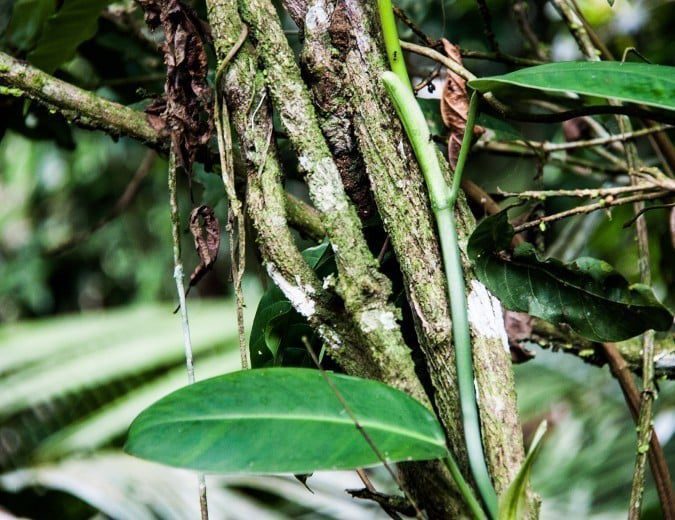Ayahusaca is renowned for changing people’s lives in a positive way, but how does it really work? The psychedelic has been used for shamanic ceremonies for centuries in the Amazon and more recently it has caught the attention of modern media and is gaining popularity across the hemisphere.
The substance is made from a vine called Banisteriopsis caapi and the shrub Psychotria viridis, and the main active ingredient is DMT. Those who consume it say it sends them on a spiritual journey, leaving their ego behind while they experience visions and self-revelations.

Ayahuasca’s therapeutic benefits in particular are coming to light — numerous people say it helped them conquer depression, addiction, PTSD and even saved their lives. But what about the science of the potent brew? How does it actually affect the human body? For answers, turn to the 2012 Ayahuasca Scientific Literature Overview compiled by the International Center for Ethnobotanical Education, Research and Service.
The review contains a plethora of studies about ayahuasca and its effects. Some highlights:
A 1999 study in the Journal of Ethnopharmacology aimed to create a better understanding of the pharmacokinetics of ayahuasca, or how it moves into and through the body. Among other revelations, the research found that drinking the traditional brew caused the onset of visual effects 60 to 120 minutes later, while the effect was much faster but of shorter duration when DMT was injected into participants.
“By investigating human reactions to psychotropic agents, we begin to bridge the gap between neurochemistry and cognition,” the study concludes. “Although preliminary in nature, the results from this study suggest that such neurochemical agents are powerful tools that can enable a more comprehensive study of the mind.”
In 2001, a report in Psychopharmacology followed up with a look at the effects and tolerability of the psychedelic. Researchers found that five out of six volunteers enjoyed their ayahuasca experience, while one withdrew after feeling disoriented and anxious. The drink didn’t cause any negative effects on the cardiovascular system, although it did induce nausea in the participants.
An entry in the 2005 Journal of Psychoactive Drugs found a “remarkable reduction of minor psychiatric symptoms” and “calmer, more assertive and vivacious behaviors” from people after their first ayahuasca experience.
The Journal of Ethnopharmacology published a paper in 2007 that found the drink had a significant effect in relieving feelings of anxiety, hopelessness and panic in a group of study participants.
Another study from the Journal of Psychoactive Drugs in 2009 looked at the effects of ayahuasca over six months on people who hadn’t previously experienced it. The results found no adverse impact on quality of life or psychiatric symptoms. Regular users did score higher, however, on tests of emotional and social functioning.
The long-term effects are promising as well. A 1996 paper in the Journal of Nervous & Mental Disease surveyed people who had used ayahuasca for religious purposes for at least a decade. Many of them reported “pervasive dysfunctional behaviors” prior to their introduction to the drink; but nearly all said ayahuasca helped them on a better path, giving up addictions, leaving behind violent behavior and dedicating themselves to good deeds.
The Medical Science Monitor in 2008 studied the long-term health and safety of Americans who used the sacrament. Results found all participants in good mental health with low anxiety and no reactivation of addictions. “There simply is no evidence from within the data collected to assert that there are concerning harms,” the study states.
Human Brain Mapping took at look at the neural basis of enhanced imagery in 2011 to try to understand the cause of the vivid visions that users frequently experience. Scientists used MRI sessions to identify signal increases in the brain’s occipital cortex and inferior and mesial temporal lobe, suggesting they could play a role.
Finally, a piece in Drug and Alcohol Dependence in 2010 assessed the addiction potential of ayahuasca. The results did not suggest any addictive properties of the brew, but rather that it helped people conquer other addictions.
We’re still learning about this mystical substance, but so far the science backs up the anecdotal reports: Ayahuasca is relatively safe, effective and can help you grapple with your most intractable struggles.
